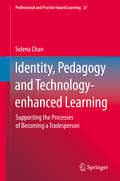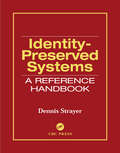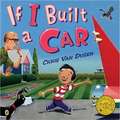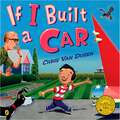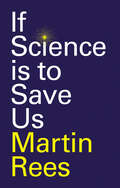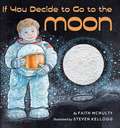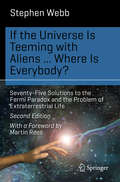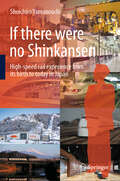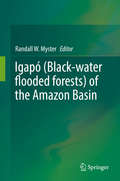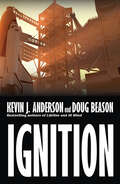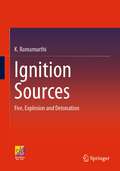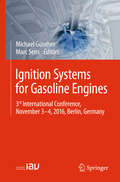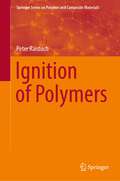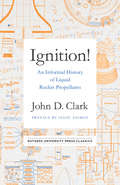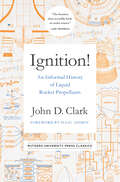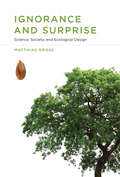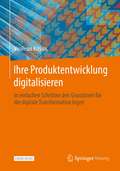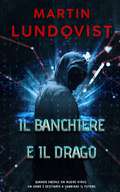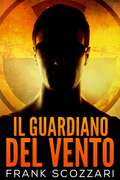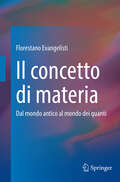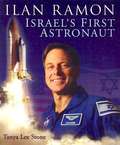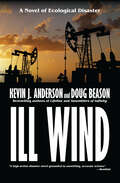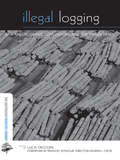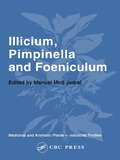- Table View
- List View
Identity, Pedagogy and Technology-enhanced Learning: Supporting the Processes of Becoming a Tradesperson (Professional and Practice-based Learning #27)
by Selena ChanThis book gathers work from over a decade of study, and seeks to better understand and support how learners become tradespeople. The research programme applies recent concepts from neuroscience, educational psychology and technology-enhanced learning to explain and help overcome the challenges of learning in trades-learning contexts. Due to the complex and multifarious nature of the work characterising trade occupations, learning how to become a tradesperson requires a significant commitment in terms of time, along with physical and cognitive effort. All modalities (visual, aural, haptic etc.) and literacies (text, numerical, spatial etc.) are required when undertaking trade work. Manual dexterity and strength, coupled with the technical and tacit knowledge required for complex problem solving, not to mention suitable dispositional approaches, must all be learnt and focused on becoming a tradesperson.However, there is a substantial gap in the literature on 'how people learn a trade' and 'how to teach a trade'. In this book, contemporary teaching and learning approaches and strategies, as derived through practice-based participatory research, are used to highlight and discuss pragmatic solutions to facilitate the learning and teaching of trade skills, knowledge and dispositions. The approaches and strategies discussed include the implementation of technology-enhanced learning; project-based inquiry/problem-based learning; and recommendations to ensure learners are prepared for the future of work.
Identity-Preserved Systems: A Reference Handbook
by Dennis StrayerIdentity-Preserved Systems: A Reference Handbook provides background for the development of processes or systems of maintaining the segregation of and documenting the identity of a product. Growers and other parties that handle, transport, condition, or process the identity-preserved (IP) product must follow strict growing and handling practices, i
If I Built a Car
by Chris Van Dusen"If I built a car, it'd be totally new! Here are a few of the things that I'd do. . . . " Jack has designed the ultimate fantasy car. Inspired by zeppelins and trains, Cadillacs and old planes, with brilliant colors and lots of shiny chrome, this far-out vision is ready to cruise! there's a fireplace, a pool, and even a snack bar! After a tour of the ritzy interior, robert the robot starts up the motor . . . and Jack and his dad set off on the wildest test drive ever!
If I Built a Car (If I Built Series)
by Chris Van DusenIf I built a car, it'd be totally new!Here are a few of the things that I'd do. . . .Young Jack is giving an eye-opening tour of the car he'd like to build. There's a snack bar, a pool, and even a robot named Robert to act as chauffeur. With Jack's soaring imagination in the driver's seat, we're deep-sea diving one minute and flying high above traffic the next in this whimsical, tantalizing take on the car of the future. Illustrations packed with witty detail, bright colors, and chrome recall the fabulous fifties and an era of classic American automobiles. Infectious rhythm and clever invention make this wonderful read-aloud a launch pad for imaginative fun.
If Science is to Save Us
by Martin ReesThere has never been a time when &‘following the science&’ has been more important for humanity. At no other point in history have we had such advanced knowledge and technology at our fingertips, nor had such astonishing capacity to determine the future of our planet. But the decisions we must make on how science is applied belong outside the lab and should be the outcome of wide public debate. For that to happen, science needs to become part of our common culture. Science is not just for scientists: if it were, it could never save us from the multiple crises we face. For science can save us, if its innovations mesh carefully into society and its applications are channelled for the common good. As Martin Rees argues in this expert and personal analysis of the scientific endeavour on which we all depend, we need to think globally, we need to think rationally and we need to think long-term, empowered by twenty-first-century technology but guided by values that science alone cannot provide.
If Then: How Simulmatics Corporation Invented The Future
by Jill LeporeLonglisted • Financial Times & McKinsey Business Book of the Year A revelatory account of the Cold War origins of the data-mad, algorithmic twenty-first century, from the author of the acclaimed international bestseller These Truths. The Simulmatics Corporation, launched during the Cold War, mined data, targeted voters, manipulated consumers, destabilized politics, and disordered knowledge—decades before Facebook, Google, and Cambridge Analytica. Jill Lepore, best-selling author of These Truths, came across the company’s papers in MIT’s archives and set out to tell this forgotten history, the long-lost backstory to the methods, and the arrogance, of Silicon Valley. Founded in 1959 by some of the nation’s leading social scientists—“the best and the brightest, fatally brilliant, Icaruses with wings of feathers and wax, flying to the sun”—Simulmatics proposed to predict and manipulate the future by way of the computer simulation of human behavior. In summers, with their wives and children in tow, the company’s scientists met on the beach in Long Island under a geodesic, honeycombed dome, where they built a “People Machine” that aimed to model everything from buying a dishwasher to counterinsurgency to casting a vote. Deploying their “People Machine” from New York, Washington, Cambridge, and even Saigon, Simulmatics’ clients included the John F. Kennedy presidential campaign, the New York Times, the Department of Defense, and dozens of major manufacturers: Simulmatics had a hand in everything from political races to the Vietnam War to the Johnson administration’s ill-fated attempt to predict race riots. The company’s collapse was almost as rapid as its ascent, a collapse that involved failed marriages, a suspicious death, and bankruptcy. Exposed for false claims, and even accused of war crimes, it closed its doors in 1970 and all but vanished. Until Lepore came across the records of its remains. The scientists of Simulmatics believed they had invented “the A-bomb of the social sciences.” They did not predict that it would take decades to detonate, like a long-buried grenade. But, in the early years of the twenty-first century, that bomb did detonate, creating a world in which corporations collect data and model behavior and target messages about the most ordinary of decisions, leaving people all over the world, long before the global pandemic, crushed by feelings of helplessness. This history has a past; If Then is its cautionary tale.
If You Decide to Go to the Moon
by Steven Kellogg Faith McNulty"If you decide to go to the moon," writes Faith McNulty, "read this book first. It will tell you how to get there and what to do after you land. The most important part tells you how to get home." Written in the second person, the text allows the reader to participate in every aspect of the journey, from packing ("don't forget your diary and plenty of food") to liftoff (at first you'll feel heavy; don't worry") to traveling through space (where "the moon glows like a pearl in the black, black sky"). The reader lands at the Sea of Tranquility, the site of the first lunar landing
If the Universe Is Teeming with Aliens ... WHERE IS EVERYBODY?
by Stephen WebbGiven the fact that there are perhaps 400 billion stars in our Galaxy alone, and perhaps 400 billion galaxies in the Universe, it stands to reason that somewhere out there, in the 14-billion-year-old cosmos, there is or once was a civilization at least as advanced as our own. The sheer enormity of the numbers almost demands that we accept the truth of this hypothesis. Why, then, have we encountered no evidence, no messages, no artifacts of these extraterrestrials? In this second, significantly revised and expanded edition of his widely popular book, Webb discusses in detail the (for now!) 75 most cogent and intriguing solutions to Fermi's famous paradox: If the numbers strongly point to the existence of extraterrestrial civilizations, why have we found no evidence of them? Reviews from the first edition: "Amidst the plethora of books that treat the possibility of extraterrestrial intelligence, this one by Webb . . . is outstanding. . . . Each solution is presented in a very logical, interesting, thorough manner with accompanying explanations and notes that the intelligent layperson can understand. Webb digs into the issues . . . by considering a very broad set of in-depth solutions that he addresses through an interesting and challenging mode of presentation that stretches the mind. . . . An excellent book for anyone who has ever asked 'Are we alone?'. " (W. E. Howard III, Choice, March, 2003) "Fifty ideas are presented . . . that reveal a clearly reasoned examination of what is known as 'The Fermi Paradox'. . . . For anyone who enjoys a good detective story, or using their thinking faculties and stretching the imagination to the limits . . . 'Where is everybody' will be enormously informative and entertaining. . . . Read this book, and whatever your views are about life elsewhere in the Universe, your appreciation for how special life is here on Earth will be enhanced! A worthy addition to any personal library. " (Philip Bridle, BBC Radio, March, 2003) Since gaining a BSc in physics from the University of Bristol and a PhD in theoretical physics from the University of Manchester, Stephen Webb has worked in a variety of universities in the UK. He is a regular contributor to the Yearbook of Astronomy series and has published an undergraduate textbook on distance determination in astronomy and cosmology as well as several popular science books. His interest in the Fermi paradox combines lifelong interests in both science and science fiction.
If there were no Shinkansen: High-speed rail experience from its birth to today in Japan
by Shuichiro YamanouchiThis book is the first book written in English about the secret story of the birth of the Shinkansen in Japan and its subsequent developments. The author, Mr. Shuichiro Yamanouchi, a former chairman of East Japan Railway (JR East), addresses what the essence of Shinkansen technology is and how it could be achieved in such a short time. And the book, written based on his long experience in railway engineering and management, gives readers a bird's-eye view of the Japanese railway as a whole, and the technical philosophy of his great career behind it. In this book, its whole picture is clarified, that is, the world's first 200 km/h running, dealing with troubles after the opening, and development of the 300 km/h commercial operation after that, including the failure stories encountered in the process. These gave a big stimulation to the development of other high-speed railways, and this book helps readers to learn about the accumulated experiences of Japanese high-speed railways that have not been revealed so far, such as railway safety, noise against the environment, railway privatization, harmonization of management and engineering, and so forth."
Igapó (Black-water flooded forests) of the Amazon Basin
by Randall W. MysterIgapó forests are a common part of the Amazon whose ecosystems are critical to our shared human future. The introduction addresses the structure, function and dynamics of igapó forests in the Amazon basin, focusing on their uniqueness due to their high level of complexity defined as the many ways that different components of igapó forests in the Amazon basin ecosystem interact and also on how those interactions are on a higher-order compared to other tropical forests. The text then breaks down the igapó ecosystem using these sections: (1) Igapó forests over space and time, (2) Water, light and soils, (3) The carbon cycle, (4) Litter, fungi and invertebrates, (5) Vertebrates, (6) Plant population studies, (7) Plant community studies, and (8) Human impacts and management. Experts from around the world serve as chapter authors that review what is known about their specific part of the igapó ecosystem, what research they have done, and also what needs to be done in the future.
Ignition
by Kevin J. Anderson Doug BeasonAn injured astronaut must save NASA from terrorists in this high-tech adventure by the bestselling authors of Lifeline and Ill Wind. Terrorists seize control of the Kennedy Space Center and hold the shuttle Atlantis and its crew hostage on the launchpad. But astronaut &“Iceberg&” Friese, grounded from the mission because of a broken foot, is determined to slip through the swamps and rocket facilities around Cape Canaveral and pull the plug on the terrorists. With their years of experience in the field, Anderson and Beason have packed Ignition with insider information to create an extremely plausible, action-packed thriller. &“Anderson and Beason have written a nail biter full of details about NASA and the Kennedy Space Center.&” —Library Journal
Ignition Sources: Fire, Explosion and Detonation
by K. RamamurthiThis book discusses the different energy sources bringing about fires, explosions, and detonations in combustibles under different levels of confinement. Focus is on the initiation source for a combustible whether it is a gas, a liquid, or a solid in a given state of confinement. Incidents of oxygen-related fires in hospitals which were particularly evident with increased usage of oxygen therapy for the extremely ill COVID-19 patients in 2021 are discussed with details of formation, accumulation, and dissipation of charges and their discharges leading to fires and explosions. Sympathetic detonations, BLEVE explosions, cook-off tests of combustibles, the inadvertent ignition sources (threats), and their control are discussed. Sporadic Ignition of wildfires in a heat dome augmented by the reflection of expansion disturbances from the interfaces separating media of different acoustic impedances are explored. Spontaneous human combustion, pilot ignition, shock wave ignition, ignition of fuel droplets and conditions under which fires, explosions, and detonations take place are discussed. Different ways of mitigating the inadvertent initiation of explosions and detonations are given at the end.
Ignition Systems for Gasoline Engines
by Michael Günther Marc SensThe volume includes selected and reviewed papers from the 3rd Conference on Ignition Systems for Gasoline Engines in Berlin in November 2016. Experts from industry and universities discuss in their papers the challenges to ignition systems in providing reliable, precise ignition in the light of a wide spread in mixture quality, high exhaust gas recirculation rates and high cylinder pressures. Classic spark plug ignition as well as alternative ignition systems are assessed, the ignition system being one of the key technologies to further optimizing the gasoline engine.
Ignition of Polymers (Springer Series on Polymer and Composite Materials)
by Peter RantuchThis book provides an overview of the initiation of combustion processes of polymeric materials. It presents physicochemical processes associated with heating as well as numerical methods for initiation parameter calculation. In addition, the book describes thermal degradation of polymers and the effect of an incident heat flux on initiation time. It then highlights the most commonly used devices for measuring the time to ignition using external heat sources. The target group of this book are scientists and researchers dealing with materials combustion and also graduates and practitioners focused on fire protection.
Ignition!: An Informal History of Liquid Rocket Propellants
by Isaac Asimov John Drury ClarkThis newly reissued debut book in the Rutgers University Press Classics Imprint is the story of the search for a rocket propellant which could be trusted to take man into space. This search was a hazardous enterprise carried out by rival labs who worked against the known laws of nature, with no guarantee of success or safety. Acclaimed scientist and sci-fi author John Drury Clark writes with irreverent and eyewitness immediacy about the development of the explosive fuels strong enough to negate the relentless restraints of gravity. The resulting volume is as much a memoir as a work of history, sharing a behind-the-scenes view of an enterprise which eventually took men to the moon, missiles to the planets, and satellites to outer space. A classic work in the history of science, and described as “a good book on rocket stuff…that’s a really fun one” by SpaceX founder Elon Musk, readers will want to get their hands on this influential classic, available for the first time in decades.
Ignition!: An Informal History of Liquid Rocket Propellants
by John Drury ClarkA classic work in the history of science, and described as “a good book on rocket stuff…that’s a really fun one” by SpaceX founder Elon Musk, readers will want to get their hands on this influential classic, available for the first time in decades. This newly reissued debut book in the Rutgers University Press Classics imprint is the story of the search for a rocket propellant which could be trusted to take man into space. This search was a hazardous enterprise carried out by rival labs who worked against the known laws of nature, with no guarantee of success or safety. Acclaimed scientist and sci-fi author John Drury Clark writes with irreverent and eyewitness immediacy about the development of the explosive fuels strong enough to negate the relentless restraints of gravity. The resulting volume is as much a memoir as a work of history, sharing a behind-the-scenes view of an enterprise which eventually took men to the moon, missiles to the planets, and satellites to outer space.
Ignorance and Surprise: Science, Society, and Ecological Design (Inside Technology)
by Matthias GrossThe relationship between ignorance and surprise and a conceptual framework for dealing with the unexpected, as seen in ecological design projects.Ignorance and surprise belong together: surprises can make people aware of their own ignorance. And yet, perhaps paradoxically, a surprising event in scientific research—one that defies prediction or risk assessment—is often a window to new and unexpected knowledge. In this book, Matthias Gross examines the relationship between ignorance and surprise, proposing a conceptual framework for handling the unexpected and offering case studies of ecological design that demonstrate the advantages of allowing for surprises and including ignorance in the design and negotiation processes.Gross draws on classical and contemporary sociological accounts of ignorance and surprise in science and ecology and integrates these with the idea of experiment in society. He develops a notion of how unexpected occurrences can be incorporated into a model of scientific and technological development that includes the experimental handling of surprises. Gross discusses different projects in ecological design, including Chicago's restoration of the shoreline of Lake Michigan and Germany's revitalization of brownfields near Leipzig. These cases show how ignorance and surprise can successfully play out in ecological design projects, and how the acknowledgment of the unknown can become a part of decision making. The appropriation of surprises can lead to robust design strategies. Ecological design, Gross argues, is neither a linear process of master planning nor a process of trial and error but a carefully coordinated process of dealing with unexpected turns by means of experimental practice.
Ihre Produktentwicklung digitalisieren: In einfachen Schritten den Grundstein für die digitale Transformation legen
by Vasileios KitsiosWelche Schritte müssen unternommen werden, um die Produktentwicklung effizienter, verlässlicher und vollständig digital durchzuführen? Dieses Fachbuch vermittelt die notwendigen Inhalte über Systeme, Prozesse und Tools, um in geeigneten Schritten eine vollständige Produktbeschreibung nach den Ein-Quellen-Prinzip zu erzielen. Anhand konkreter Fallbeispiele aus der Automotive und Luftfahrtindustrie wird das Konzept veranschaulicht und dem Leser wird die Umsetzung in 3DExperience R2021x und CATIA V5- 6R2019 demonstriert.
Il Banchiere e il Drago
by Martin LundqvistQuando emerge un nuovo virus, un uomo è destinato a cambiare il futuro. L'agente australiano Jared Pond viene inviato per indagare sulle voci su una nuova arma biologica cinese, il virus Hei Bai. Durante il suo incarico, Jared incontra e si innamora dell'attivista cinese per i diritti civili Eileen Lu, nemica del CPOC. Insieme, Jared ed Eileen cercano di scoprire gli oscuri segreti del malvagio dittatore Presidente Jing Xi e del suo assistente Tzi Cheng. Ma chi è Pierre Beaumont e qual è il legame tra la diffusione del virus e l'amministratore delegato della Banca mondiale?
Il Guardiano del Vento
by Silvia De Cristofaro Frank ScozzariIn California, una delle più grandi centrali nucleari negli Stati Uniti è presa di mira da un gruppo di terroristi. Aiutati da una talpa,il piano degli estremisti è quello di appropriarsi del reattore e spargere radiazioni nel vento, scatenando caos in tutto il mondo. L'unica cosa che si frappone al loro piano è una coppia di ufficiali di sicurezza ribelli,la cui fuga romantica li elimina temporaneamente dal radar dei terroristi. Dopo essersi resi conto di quello che è successo alla centrale, si ritrovano coinvolti in una battaglia contro il tempo e contro scenari terrificanti. Un'improvvisa rinascita di senso del dovere gli fa prendere le armi e li fa impegnare fino a un punto di non ritorno. Ma la loro chiamata all'azione è arrivata troppo tardi? Esponendo la vulnerabilità delle centrali nucleari della nazione,il Guardiano del Vento è un potente thriller di Frank Scozzari, che ha ricevuto quattro nomination per il Premio Pushcart.
Il concetto di materia: Dal mondo antico al mondo dei quanti
by Florestano EvangelistiIn questo libro si intende illustrare il lungo cammino che ha portato all’odierna concezione della materia, la cui determinazione rappresenta uno dei maggiori successi ottenuti dalla ricerca scientifica. Oggi, grazie alla meccanica quantistica e ai progressi della fisica e della chimica, abbiamo una conoscenza abbastanza precisa della struttura e delle proprietà della materia. Questa conoscenza è stata messa a punto in tempi relativamente recenti, pur essendo la risposta a domande antiche, alcune delle quali sono state poste contestualmente al sorgere della riflessione filosofica nella Grecia antica. Il lungo cammino, che ci ha portato all’acquisizione di questa conoscenza può essere diviso in tre fasi: la prima, temporalmente molto lunga, che è terminata alla fine del XIX secolo con la messa a punto della concezione della materia basata sulla fisica “classica”; la seconda, che ha visto la costruzione della “vecchia teoria dei quanti” nel tentativo di spiegare le proprietà della materia ed è terminata con la formulazione della moderna meccanica quantistica; la terza, in cui si è elaborata la moderna concezione quantomeccanica della materia atomica e nucleare. Tra gli argomenti trattati, che illustrano la prima fase sono: la riscoperta e l'appropriazione di conoscenze e concetti dell'antichità da parte della cultura occidentale in epoca moderna; il successivo processo di revisione nei secoli XVI e XVII e le nuove sperimentazioni e teorie del XVIII secolo; l’affermazione, nell’Ottocento, della visione di una materia composta da un numero preciso di sostanze elementari, gli elementi, dotati di proprietà fisiche e chimiche peculiari; la scoperta degli elettroni. Tra gli argomenti trattati, che illustrano la seconda fase sono: l’introduzione delle prime ipotesi di quantizzazione delle grandezze fisiche grazie a Planck ed a Einstein; la prima spiegazione delle proprietà della materia basata sugli assiomi di quantizzazione rappresentata dalla teoria di Bohr-Sommerfeld dell’atomo di idrogeno; la scoperta delle nuove proprietà quantomeccaniche della materia (lo spin dell’elettrone, il principio di esclusione e la dualità onda-particella); l’elaborazione moderna meccanica quantistica. Tra gli argomenti trattati, che illustrano la seconda fase sono: l’introduzione delle prime ipotesi di quantizzazione delle grandezze fisiche grazie a Planck ed a Einstein; la prima spiegazione delle proprietà della materia basata sugli assiomi di quantizzazione rappresentata dalla teoria di Bohr-Sommerfeld dell’atomo di idrogeno; la scoperta delle nuove proprietà quantomeccaniche della materia (lo spin dell’elettrone, il principio di esclusione e la dualità onda-particella); l’elaborazione della moderna meccanica quantistica.
Ilan Ramon: Israel's First Astronaut
by Tanya Lee StoneStone tells of the first Israeli, Ilan Ramon, to travel to space.
Ill Wind: A Novel of Ecological Disaster
by Kevin J. Anderson Doug BeasonAn environmental disaster leads to global chaos in this science fiction thriller by the authors of Assemblers of Infinity. It is the largest oil spill in history: a supertanker crashes into the Golden Gate Bridge in San Francisco Bay. Desperate to avert environmental damage (as well as a PR disaster), the multinational oil company releases an untested designer oil-eating microbe to break up the spill. What the company didn&’t realize is that their microbe propagates through the air…and it mutates to consumer anything made of polycarbons: oil, gasoline, synthetic fabrics, plastics of all kinds. And when every piece of plastic begins to dissolve, it&’s too late . . . Praise for Ill Wind &“A high-action, best-seller-caliber disaster novel grounded in unsettlingly accurate science. . . . Using the standard disaster novel format of multiple characters and plot lines, Beason and Anderson maintain a suspenseful, breakneck pace that carries us to a thrilling finish.&” —Booklist&“A big, near-future disaster novel straddling the border between science fiction and technothriller, likely to appeal to fans of both.&” —Kirkus Reviews &“A real winner . . . [the authors&’] grasp of the science, the technology, and the political scene is unique.&” —Dr. D. Allan Bromley, former assistant to the president for science and technology
Illegal Logging: Law Enforcement, Livelihoods and the Timber Trade
by Luca Tacconi'This book carefully blends conceptual insights with extensive empirical evidence to navigate the reader through an issue that is still poorly understood [and is] a valuable reference for the development practitioner to understand the fundamental causes of illegal logging, its myriad consequences and the policy choices available to address the problem' Nalin Kishor, Forest Law Enforcement and Governance Coordinator, The World Bank 'An excellent resource for those working to conserve and sustainably manage forests worldwide. It offers an extensive and comprehensive study of illegal logging, bringing together the knowledge and views of experts who examine its roots and social, economic and environmental implications. One of its important contributions is to show that, unless coupled with reform of forestry regulations to take into account local people, law enforcement to curb illegal logging can negatively impact them. Therefore, any effective and fair approach to the problem needs to involve governments, forestry operators and local communities alike' Gonzalo Oviedo, Senior Social Policy Advisor, IUCN In many countries illegal logging now accounts for a large share of the harvest. Once cut, illegal logs feed an insatiable demand for exotic hardwoods in developed and developing countries. The result has been loss of both revenue and biodiversity, and consequently the issue has risen to the top of the global forest policy agenda as one of the major threats to forests, and donors and national governments are starting to develop initiatives to control illegal logging. Yet for such a massive illegal trade, there is surprisingly limited knowledge available as to the major causes of illegal logging and its impacts on biodiversity, people and livelihoods and national economies, and thus plenty of speculation and action without evidence. It is clear that while illegal logging does have negative impacts, it also, controversially, and perhaps paradoxically, benefits many stakeholders, including local communities. This book, written by the world's foremost experts, examines the key issues including law and enforcement, supply and demand, corruption, forest certification, poverty, local livelihoods, international trade and biodiversity conservation. It includes key case studies from forest-rich hotspots in North, South and Central America, equatorial Africa and Indonesia. While there are clearly no easy answers, this book sorts fact from fiction and explores the many dimensions of the causes, impacts and implications for forests, people, livelihoods and forest policy. Published with CIFOR
Illicium, Pimpinella and Foeniculum
by Manuel Miró JodralThe book includes current knowledge on Illicium verum (star anise) and Pimpinella anisum (aniseed), main commercial species rich in anetol. It also analyzes Foeniculum vulgare (fennel) and other species of Pimpinella (P. major, P. peregrina and P. saxifraga). This volume includes a botanical, chemical, pharmacological, and therapeutic survey of the
